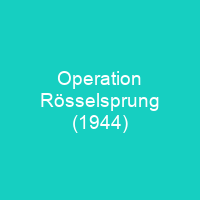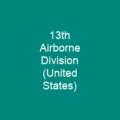Operation Rösselsprung was a combined airborne and ground assault by the German XV Mountain Corps and collaborationist forces on the Supreme Headquarters of the Yugoslav Partisans. The operation was launched on 25 May 1944, and was aimed at capturing or killing the Partisan leader Marshal Josip Broz Tito. Tito, his principal headquarters staff and the Allied military personnel escaped. Fierce Partisan resistance in the town itself and along the approaches to Drvar contributed to the failure of the mission.
About Operation Rösselsprung (1944) in brief

The NDH immediately implemented genocidal policies against the Serb, Jewish and Romani population of the puppet state. After the collapse of Yugoslavia, armed groups appeared, and in the territory of theNDH, while the predominantly Serb resistance to Ustaše rule was initially not strongly aligned with ideology, two principal groups soon established themselves. The Partisans were resolutely anti-Axis throughout the war, but the CheTniks extensively collaborated with Italian occupation forces garrisoned in the NDh from mid-1941, and especially after the Italian capitulation in September 1943, also with the Germans. In September the Partisans took advantage of the capitulation of Italy and managed to increase the territory under his control and double his forces to around 200,000 men, arming them with captured Italian weapons. In late November, he was designated marshal of Yugoslavia and prime minister. He established his headquarters nearby at Drvar and temporarily suspended his successful tactic of being constantly on the move. The British and Soviet military missions were also stationed in villages near Drvar, as well as several Partisan and Communist Party, training and youth organisations based in and along Drvar along with the Escort Battalion which was responsible for Tito’s personal safety. At the time, some United States military officers were involved in the mission, as were some British military officers as well. The German commander-in-chief Southeast Europe admitted a few weeks later that Tito is our most dangerous enemy.
You want to know more about Operation Rösselsprung (1944)?
This page is based on the article Operation Rösselsprung (1944) published in Wikipedia (as of Dec. 04, 2020) and was automatically summarized using artificial intelligence.







